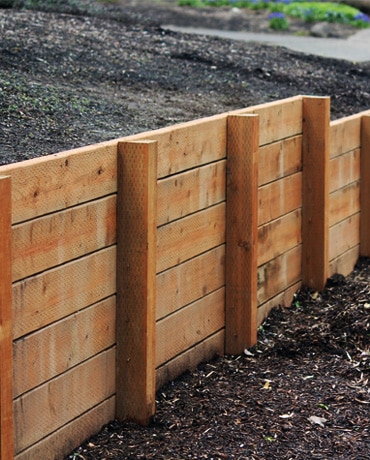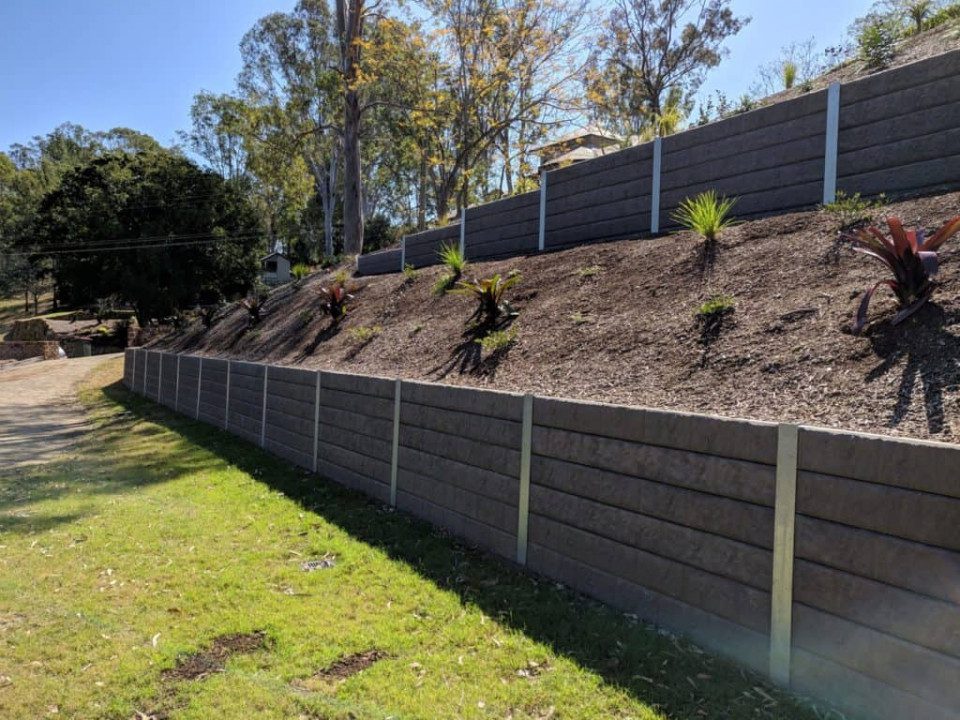How Retaining Walls Sunshine Coast Include Worth and Functionality to Your Building
How Retaining Walls Sunshine Coast Include Worth and Functionality to Your Building
Blog Article
Enhancing Building Stability: The Duty of Retaining Walls in Dirt Retention and Disintegration Control
Preserving wall surfaces stand as quiet guardians, playing a critical function in dirt retention and disintegration control. By exploring the subtleties of various kinds, design factors to consider, building and construction strategies, and upkeep tips linked with retaining wall surfaces, a deeper understanding of their essential role in boosting property security arises.
Value of Retaining Walls in Stability
Preserving wall surfaces play a vital role in holding back soil, preventing disintegration, and developing level surfaces in sloped areas. By giving architectural support, maintaining walls assist to rearrange lateral stress caused by soil, stopping landslides and slippage.
Retaining wall surfaces are particularly crucial in unequal or hilly terrains where soil disintegration is a common incident. Without ample support, dirt disintegration can result in the degradation of landscapes, compromising the integrity of frameworks and presenting threats to citizens. Keeping wall surfaces function as barriers, stabilizing the soil and preventing it from shifting downhill during hefty rainfall or other ecological stressors.
Moreover, preserving walls offer lasting benefits by minimizing maintenance costs connected with soil disintegration and land instability. By purchasing well-designed maintaining wall surfaces, building owners can ensure the long life and sustainability of their landscapes while advertising a aesthetically enticing and risk-free atmosphere.

Types of Retaining Walls for Disintegration Control
Gravity preserving walls are strong frameworks that depend on their weight to resist the pressure of the dirt behind them. Cantilever retaining wall surfaces, on the various other hand, are created with a thicker base and make use of a bar arm to stand up to the dirt stress.
For taller walls or where room is a restraint, secured keeping walls are typically used. These walls use cables or strips that are anchored right into the dirt or rock behind the wall to give added support. An additional type, the sheet stack retaining wall surface, is suitable for locations with soft soil. Retaining Walls Sunshine Coast. These walls contain interlacing sheets that are driven into the ground to create a barrier versus soil disintegration. When selecting the ideal sort of preserving wall surface for disintegration control, aspects such as soil composition, wall surface height, and site problems should be very carefully thought about to guarantee resilient stability and performance.
Design Factors To Consider for Dirt Retention
The elevation and area of the maintaining wall are crucial variables that affect the overall layout. Engineers need to likewise think about the pressure applied by the kept soil and prospective side loads to guarantee the structure's security over time.
Additionally, the material choice for the maintaining wall surface is crucial in enhancing longevity and capability. Concrete, hardwood, gabion baskets, and natural rock prevail materials made use of in retaining wall building and construction, each with its distinct benefits and factors to consider. Proper drainage mechanisms, such as weep holes and French drains pipes, ought to be incorporated right into the style to protect against water accumulation behind the wall, which can result in structural failing and disintegration.
Building Strategies for Retaining Wall Surfaces
When implementing style factors to consider for reliable dirt retention, the building techniques for retaining walls play a vital function in ensuring see here now architectural stability and lasting stability. One common strategy is the gravity wall surface, which relies on the weight and mass of the wall itself to stand up to the stress of the why not try this out retained dirt.
Another commonly made use of construction strategy is the cantilevered wall surface, which makes use of a concrete piece foundation that expands backwards right into the preserved soil. This design provides extra stability and appropriates for tool to high retaining wall surfaces. For taller structures, enhanced soil techniques such as the usage of geogrids or dirt nails can be utilized to enhance the wall's strength and stability.

Upkeep Tips for Property Security
To make sure lasting home security, regular maintenance techniques are vital for protecting the stability of protecting against and preserving walls erosion concerns. Cleansing the surface area of the preserving wall surfaces can likewise aid maintain their architectural stability by removing dirt, particles, and plant life that might weaken the wall surface over time.
In enhancement to visual assessments and cleaning, it is necessary to check the water drainage systems related to the maintaining wall surfaces. Making sure that drains are free from obstructions and working appropriately can stop water accumulation behind the wall surfaces, which can lead to pressure and potential failing. Appropriately operating drain systems are crucial for taking care of water flow and reducing the danger of erosion.
Regularly keeping and keeping track of retaining walls according to these pointers can expand their lifespan and contribute to the total stability of the residential property.
Conclusion
To conclude, maintaining walls play a critical duty in boosting home security by preventing dirt disintegration and preserving dirt in location. By utilizing different types of keeping wall surfaces and taking into consideration style and construction methods, homeowner can successfully control disintegration and keep the stability of their land. Regular maintenance of go to this website keeping walls is necessary to ensure long-term stability and defense against erosion. Effectively constructed and kept preserving walls are key components in protecting residential property stability.
For taller walls or where room is a constraint, secured keeping wall surfaces are commonly used. These wall surfaces use cords or strips that are anchored right into the dirt or rock behind the wall to provide additional support. When choosing the proper kind of retaining wall for erosion control, elements such as dirt structure, wall height, and website problems should be carefully thought about to make certain resilient stability and effectiveness.
One typical technique is the gravity wall surface, which depends on the weight and mass of the wall surface itself to resist the stress of the preserved dirt. Cleaning up the surface of the retaining walls can additionally aid preserve their structural honesty by getting rid of dust, particles, and greenery that can damage the wall over time.
Report this page